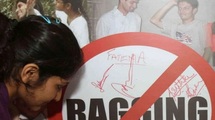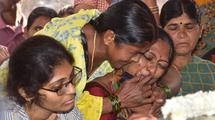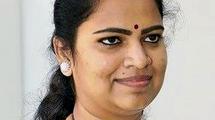Many medical students under stress: study
According to a study, 358 suicide deaths among medical students (125), residents (105) and physicians (128) had been reported between 2010 and 2019; additionally, 1,166 students dropped out of medical colleges; there were several appeals for intervention from students and parents.
A recent Right to Information (RTI) response from the National Medical Commission (NMC) said that 64 MBBS and 55 postgraduate medicos died by suicide in the last five years. Additionally, 1,166 students dropped out of medical colleges.
Of these, 160 were studying MBBS and 1,006 were pursuing postgraduate courses.
Concerned over the incidents of suicide and suicidal ideation among medical students, the NMC, India’s apex medical education regulatory authority, late in 2022 asked all medical colleges in the country to compile data on suicides, and drop-outs among undergraduate and postgraduate students over the past five years.
The decision by the commission to seek this information came over the concern that ragging and overwork may have contributed to such outcomes, a senior Ministry of Health and Family Welfare official said. He added that there were also several appeals for intervention from students and parents.
There is no clarity, however, on how it proposes to carry forward and use the collected data.
The commission’s response is to a reply sought by RTI activist Vivek Pandey.
Those left behind
“A child ending their life is a death sentence for the parents,’’ D. Narendar, an Assistant Sub-Inspector with the Railway Protection Force of South Central Railway, who lost his daughter, Preethi Dharavath, 26, a month ago.
A first year postgraduate student of Kakatiya Medical College (KMC) in Telangana’s Warangal, it is alleged that Dr. Dharavath took her life after being harassed at work by a senior student. The matter is under investigation.
Speaking about the tragedy, Mr. Narendar said, “I wish she had never got the postgraduate seat. She may have been alive today. Our family is yet to come to terms with what has happened. We are numb.”
Unfortunately, Dr. Dharavath’s parents aren’t the only ones dealing with the trauma of having lost their child in this tragic manner.
According to a study, 358 suicide deaths among medical students (125), residents (105) and physicians (128) were reported between 2010 and 2019. Around seven out of 10 suicides took place before the age of 30, said the study titled ‘Suicide deaths among medical students, residents and physicians in India spanning a decade (2010-2019): An exploratory study using online news portals and Google database’.
Female residents and physicians were younger than their male counterparts at the time of suicide. Anaesthesiology (22.4%) followed by obstetrics-gynaecology (16.0%) had the highest suicide deaths. Academic stress among medical students (45.2%) and residents (23.1%), and marital discord among physicians (26.7%) were the most noticeable reasons for suicide. Mental ill-health was the next most common reason in medical students (24%) and physicians (20%), while harassment (20.5%) was a cause for residents. Upto 26% had exhibited suicide warning signs and only 13% had ever sought psychiatric help before ending their lives.
“Suicide is a complex, multifactorial issue. The gruelling 24x7 shifts, untimely working hours, distance from family, hostile work environment and unsupportive administration, sleep deprivation, financial hardships, examination stress, inhumane ragging sometimes, confounded by caste-based discrimination and regionalism are some of the hardships that student doctors face,’’ Rimy Dey, committee head, postgraduate studies, Indian Medical Association-Junior Doctors Network said.
She added that the risk of suicide among doctors is almost 2.5 times more than the general population, adding, “Sadly, not much has been done or talked about.”
A senior resident at the All India Institute of Medical Sciences (AIIMS) who did not want to be named, said that while rules, safeguards, and support systems are provided in almost all medical colleges, rigorous implementation is lacking. For instance, the NMC has an anti-ragging committee that monitors complaints. “We saw recently how toxic the work environment can get, when a senior doctor, alarmed by the suicides, appealed [via a press release] to fellow seniors to treat juniors [students] with dignity and love,’’ he said.
Suicide and self-harm are a major health and societal issue worldwide, with the greatest burden occurring in low-income and middle-income countries, The Lancet Psychiatry said in a 2019 article titled ‘Mental healthcare for university students: A way forward?’
It noted that: “The transition to university coincides with a critical developmental period characterised by individuation and separation from family, development of new social connections, and increased autonomy and responsibility. At the same time, the brain is undergoing accelerated development and is at heightened sensitivity to risk exposures commonly encountered by university students including psychosocial stressors, recreational drugs, alcohol binging, and sleep disruption.”
It recommended that universities take a lead role in developing an “integrated system of student mental health care”.
Those who require assistance for overcoming suicidal thoughts may contact Aasra (022-27546669) or the Vandrevala Foundation (18602662345/18002333330).
(TH, 03.04.2023)



